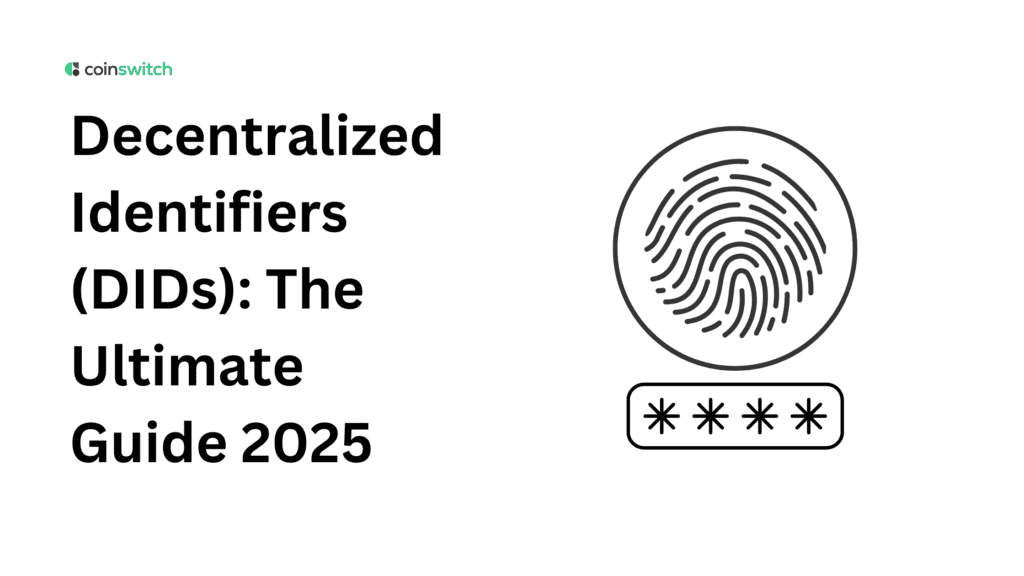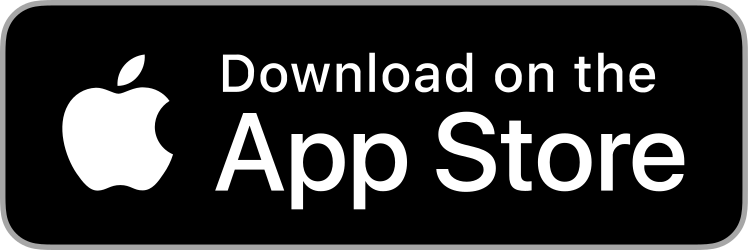Introduction
Many of us are familiar with decentralized crypto exchanges. But there’s something way deeper going on in the decentralized space—something that’s about to flip how we handle identity online. Yes, we’re talking about Decentralized Identifiers, or DIDs. These aren’t just technical tools; they give people full control over their digital identity without a middleman in sight.
With DIDs, there are no account lockouts, no central registry keeping tabs, and no silent data scraping behind the scenes. It’s a system where you control your identity, own your credentials, and decide what gets shared.
Let’s unpack everything you need to know about DIDs in 2025.
What Are Decentralized Identifiers (DIDs)?
Decentralized Identifiers are self-owned digital IDs. They are stored on distributed networks and don’t need a central provider to issue or manage them. Think of them like your digital passport—built by you, owned by you.
Each DID links to a DID document. This document holds metadata, authentication keys, and service endpoints. Formats follow this style: did:method:uniqueID. That method tells apps how to resolve the DID and find the right document, whether it’s on Ethereum, Dock, ION, or somewhere else.
You can create DIDs, rotate keys, revoke access, and update services, all without seeking permission. And they work across chains, browsers, and ecosystems.
Three Pillars of Self-Sovereign Identity
Self-sovereign identity works on three main principles: control, portability, and verifiability.
Full Control
You create and manage your own DID. That includes holding your private key, choosing who gets access, and rotating or revoking services when needed.
Cross-Ecosystem Portability
Use the same DID to sign into a DeFi app, verify a healthcare credential, or prove your identity in a DAO. No need to juggle multiple logins.
Instant Verifiability
Anyone can verify your identity using cryptographic proofs and your public key. No third-party lookup required.
World Wide Web Consortium’s Decentralized Identifier (DID) Standards
The World Wide Web Consortium (W3C) has laid out the blueprint for how DIDs work. These standards make DIDs readable and usable across platforms.
They define:
- DID Syntax: The format of a DID string
- DID Document: Metadata and keys
- DID Resolution Process: How to fetch DID documents from the network
Thanks to this, a DID created on Dock can still be understood by an app built for Ethereum or ION. W3C standards are what make DIDs truly interoperable.
Benefits of Decentralized Identifiers
Why do DIDs matter? Because they solve real problems.
You Own Your Data
You decide what to share, when to share it, and with whom. There’s no background harvesting going on.
One-Click Logins
No more passwords or CAPTCHA screens. Just sign a message with your key and you’re in.
Resilient Identity
If a site goes down or an app gets delisted, your DID still works. It lives independently on-chain or off-chain.
Privacy by Default
DIDs are pseudonymous. You link them to real credentials only when needed—and on your terms.
Centralized vs. Decentralized Identifiers
Here’s the deal: centralized identifiers live on a company’s server. The company or organization makes the rules. They can freeze your account, limit access, or change how data’s used.
DIDs flip the model. You create, manage, and control your digital identity. No gatekeepers. You’re not stuck in a centralized, controlled system.
Plus, centralized IDs leave trails. Every use gets logged somewhere. With DIDs, you rotate or switch identifiers without dropping functionality.
Verifiable Credentials System
DIDs unlock the real power when paired with Verifiable Credentials (VCs). VCs are cryptographically signed statements—like degrees, licenses, or memberships.
Let’s say a university issues a diploma. Instead of emailing a PDF, they sign the credential with their DID and send it to the student’s DID. Now, the student can share it with employers, who can instantly verify it with zero friction.
Each VC includes:
- Issuer DID
- Subject DID
- Claims (like name, degree, date)
- Proof (digital signature)
And it’s all verifiable without contacting the issuer.
Decentralized Identifiers and Blockchain
DIDs don’t need a blockchain to function, but pairing them with one adds a whole new layer of security. Blockchains keep records immutable and available around the clock.
Dock, Ethereum, Polkadot, and ION offer DID registries that either store references to DID docs or provide native methods for resolving them.
Here’s what you get:
- Immutability: Nobody can tamper with records
- Availability: Always online, globally accessible
Read More: What Are Real-World Assets (RWAs)?
The Role of DIDs In the Verifiable Credentials System
The VC system revolves around three players:
- Issuer: Sends the credential and signs it using their DID
- Holder: Stores the credential in a wallet
- Verifier: Checks the credential against the issuer’s DID
Each step happens with DIDs. The whole thing runs on cryptographic trust. It’s secure, instant, and requires no phone calls or follow-ups.
How to Verify Credentials With Decentralized Identifiers
Verifying credentials is hassle-free. Here’s how it works:
- Fetch the Issuer’s DID Document: The verifier looks up the document tied to the issuer’s DID.
- Find the Public Key: The document lists public keys. The verifier pulls the one used to sign the VC.
- Check the Signature: Use the key to verify the digital signature. If it checks out, the data is real.
- Check Revocation Status: Confirming the VC is still active by looking at embedded status lists or registries.
- Match VC Standards: Scan the credential format to confirm it aligns with W3C’s framework.
All this happens in milliseconds using tools like DIDKit or Dock’s SDK.
Benefits of Verifying Credentials Instantly for Organizations
Organizations can save time, cut risk, and speed up onboarding.
- Onboard hires by checking credentials in seconds
- Avoid fraud with tamper-proof VCs
- Skip follow-ups with schools, banks, or issuers
- Stay audit-ready with verifiable metadata
Fast verifications build trust without adding overhead.
Benefits of Verifying Credentials Instantly for Individuals
For individuals, it’s all about portability and power.
- Store credentials in your own wallet
- Share them with any platform
- Prove your identity or qualifications instantly
- Choose what to reveal, when, and to whom
One credential. Many doors. Total control.
Complete Verification Guide
Running a platform that wants to verify VCs? Here’s the checklist:
- Integrate DID Tools: Start with did-jwt, Dock SDK, or similar
- Connect Wallets: Let users use MetaMask, Dock Wallet, etc.
- Extract Data: Pull claims, issuer DID, and signatures from VCs
- Verify Signatures: Match them with the issuer’s public key
- Trigger Action: Once verified, grant access or show a badge
Verification is seamless—and doesn’t need any paperwork.
Read More: What is Etherscan and How Do You Use It?
Private vs. Public Decentralized Identifiers
There are two DID types:
- Public DIDs: Live on-chain. Best for issuers, DAOs, or apps needing open verification.
- Private DIDs: Stored locally. Great for one-on-one or app-specific use.
Use public ones for public interactions. Use private ones for tight control. You can rotate or mix depending on the use case.
Difference Between Public Keys and Private Keys That Come With DIDs
Every DID runs on a keypair:
- Public Key: Shared openly so that others can verify your signatures
- Private Key: Stays safe in your wallet, used to sign messages
The DID document shows the public key. The private key never leaves your device. That’s how the system stays secure and flexible.
Example of How Decentralized Identifiers Work In the Verifiable Credentials System
Let’s walk through a live case.
A university issues a diploma to a student’s DID. The student stores it in the Dock Wallet. While screening the job application, the employer’s system:
- Pulls the university’s DID doc
- Verifies the digital signature
- Confirms the data hasn’t been changed
Boom. The job offer rolls in. No emails, no PDFs, no second-guessing.
Use Cases For DIDs
You’ll find DIDs solving real problems across:
- Education: Degrees, attendance, enrollment
- Healthcare: Prescriptions, patient identity, insurance
- Web3: DAO access, role verification
- Supply Chain: Track origin, ownership, authenticity
- Government: Digital IDs, voting, benefit delivery
Where trust matters, DIDs show up.
How to Manage and Create a Decentralized Identifier
Creating a DID is easy.
- Pick a method (did:dock, did:ethr)
- Generate a keypair
- Write your DID document
- Anchor it on-chain
- Store it in your wallet
Once you’re done, use it across apps, sign into systems, or receive credentials.
Manage DIDs With the Dock Wallet
Dock Wallet puts identity management in your hands. You can:
- Create multiple DIDs
- Store and share VCs
- Revoke access instantly
- Back up and export identity data
Conclusion
DIDs are the backbone of digital identity in the Web3 era. They give control back to users, cut friction, and open up global access. Whether you’re signing into a DAO, applying for a job, or verifying a license, DIDs handle the trust layer.
They’re secure. They’re flexible. And they’re already live.
DIDs are the new normal.
FAQs
1. What are Decentralized Identifiers (DIDs)?
DIDs are unique digital identifiers. They are specifically created and controlled by individuals or organizations, leaving no room for any centralized authority to intervene. In short, they are on a decentralized network and don’t need any third-party involvement.
2. How do DIDs work?
A DID connects to a DID document stored on a blockchain or off-chain system. This document could be anything, like public keys or service endpoints that can help verify credentials or even sign data.
3. What are the benefits of using DIDs over traditional identity systems?
When you are using DIDs instead of legacy identity systems, you get better privacy control and interoperability. You can manage your identity without relying on any particular platform.
4. Who is adopting DIDs in 2025?
A wide range of entities are involved in DID adoption. It includes Web3 platforms, governments, universities, and healthcare providers. They are using DIDs for authentication, credentialing, and access control.








